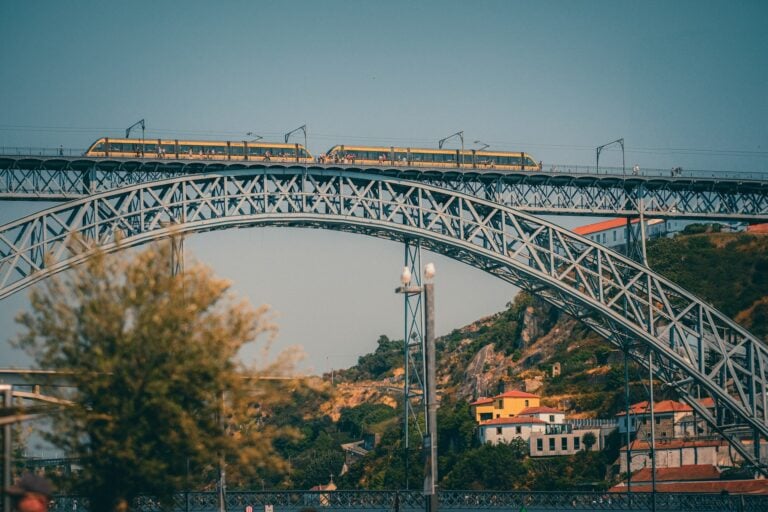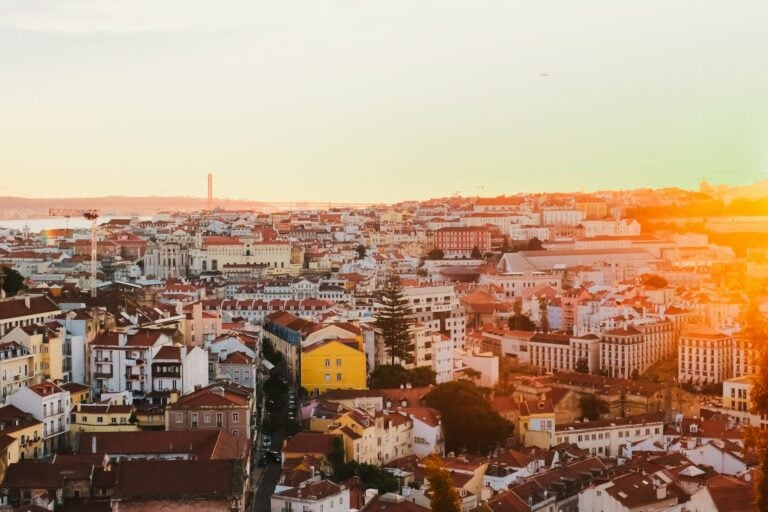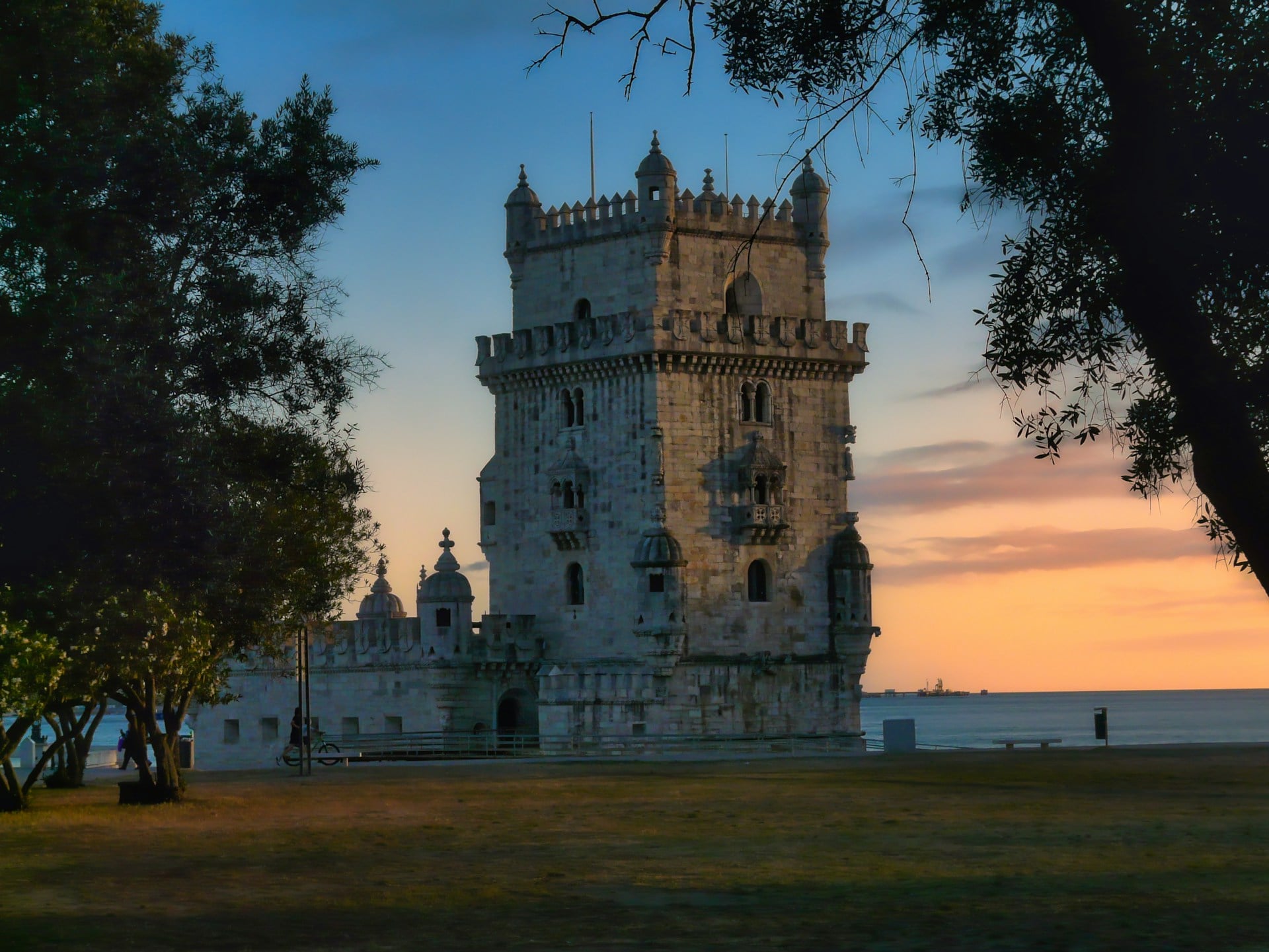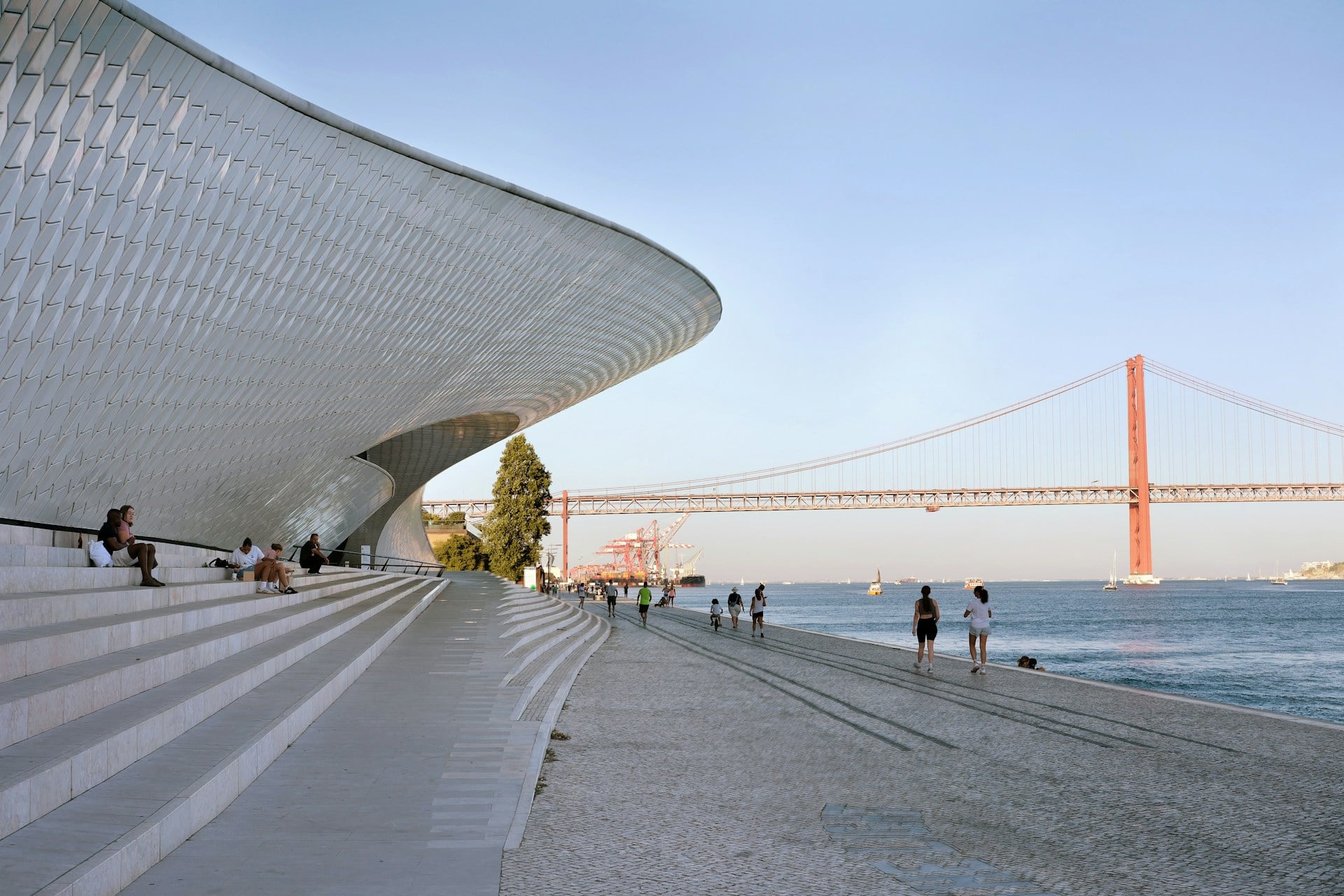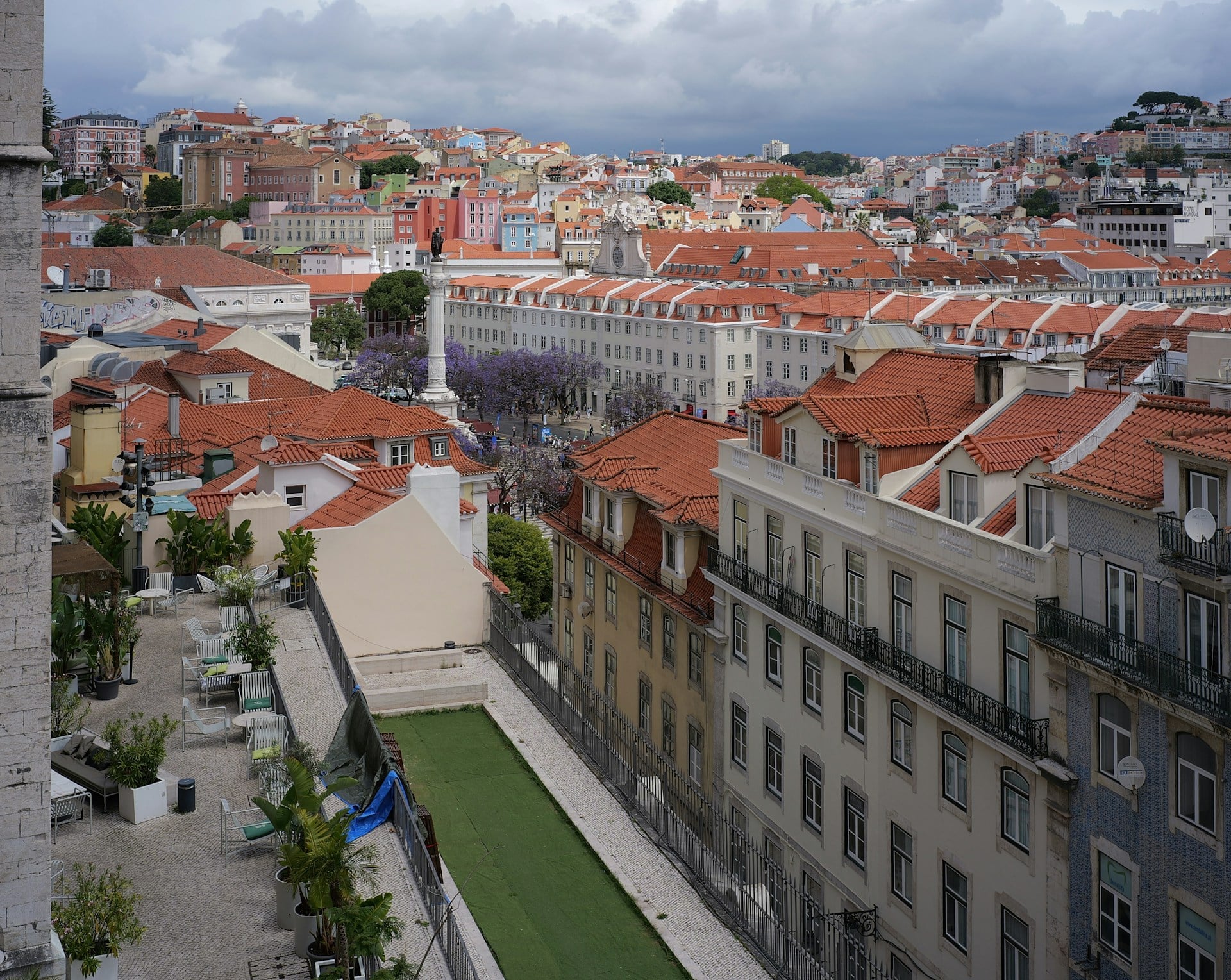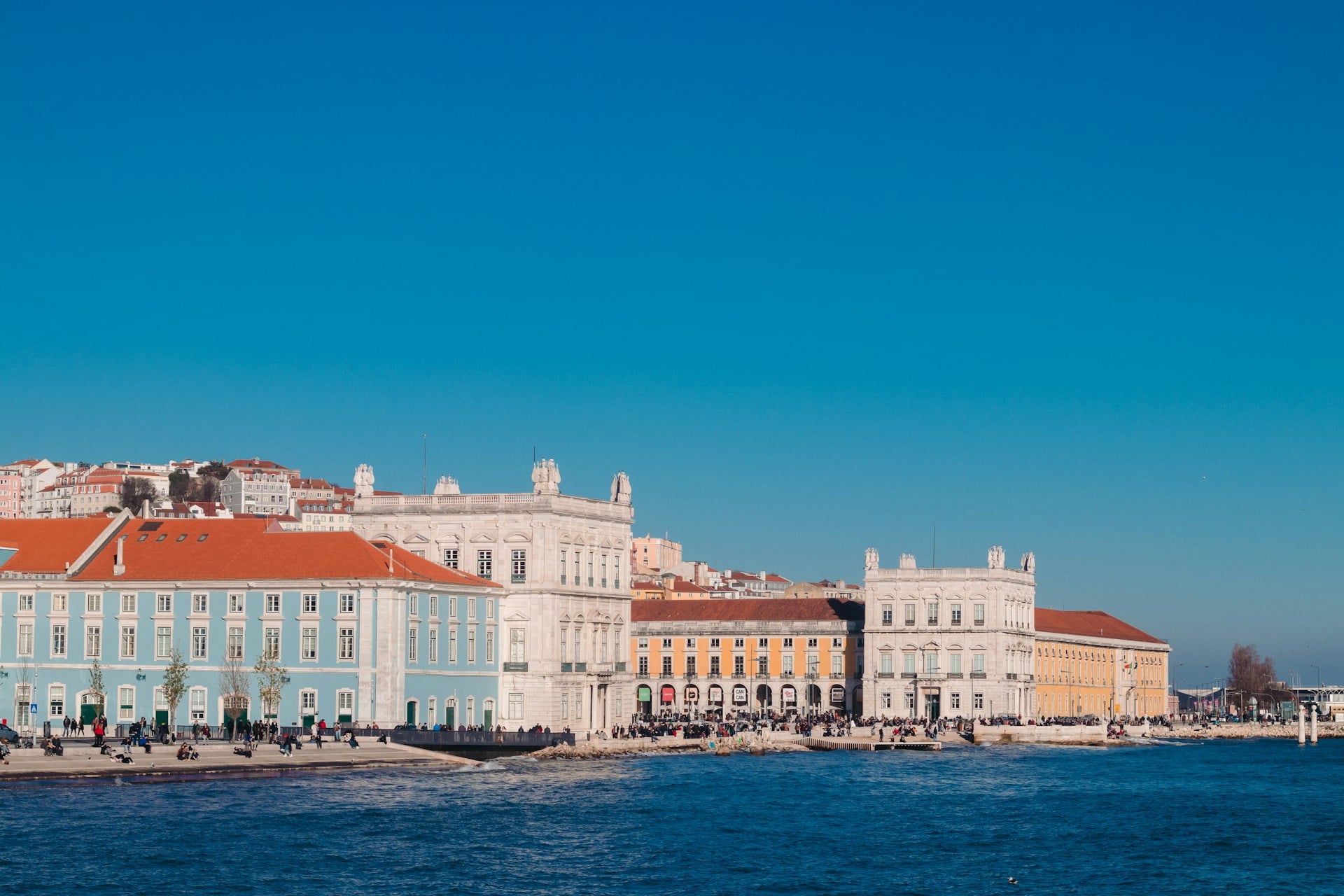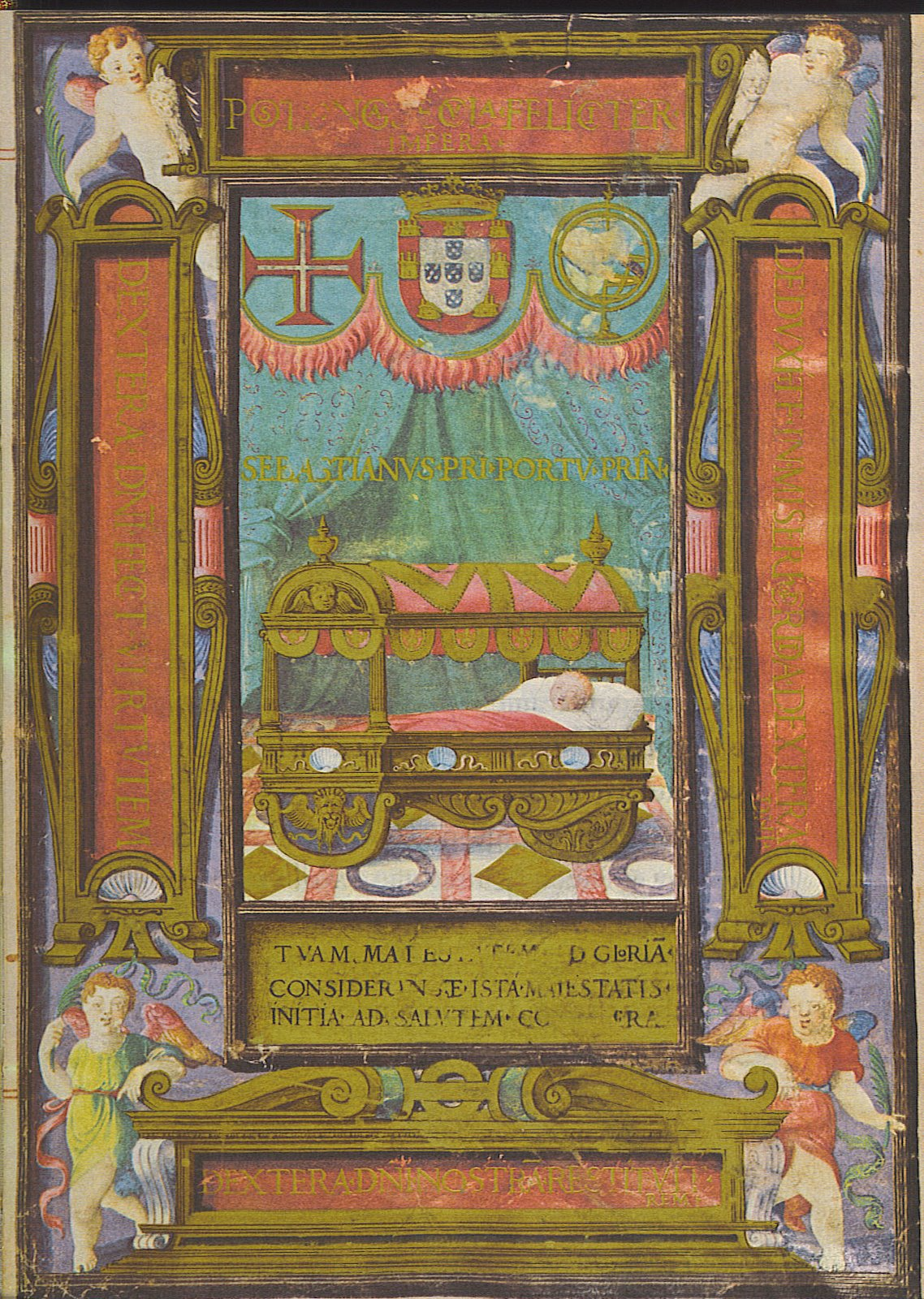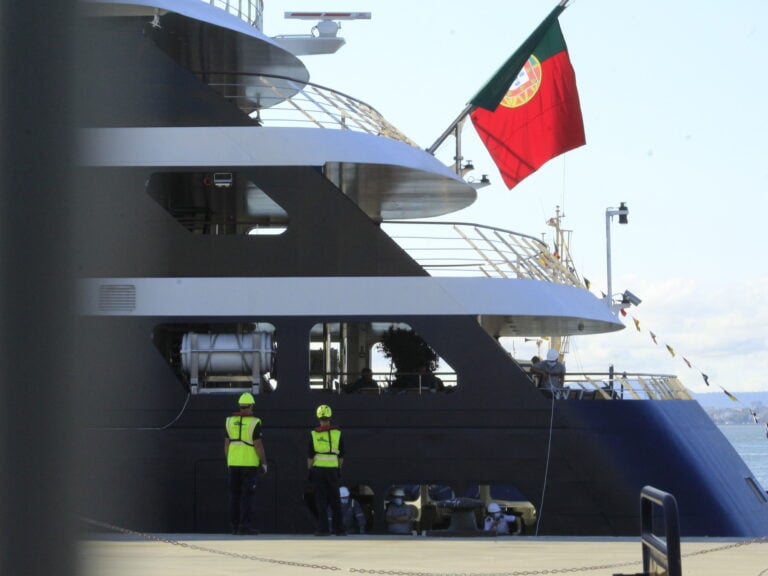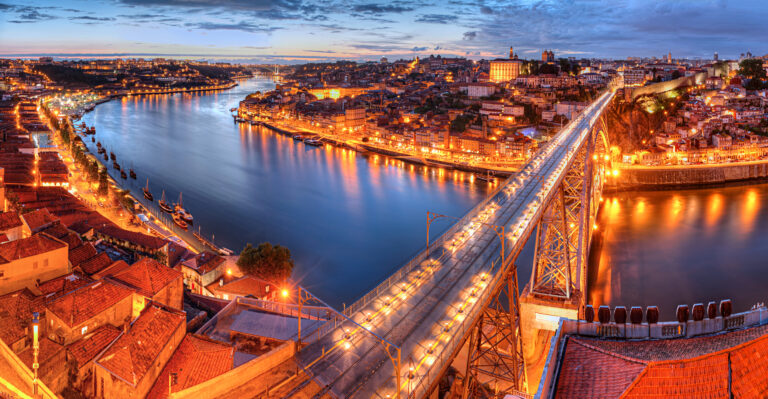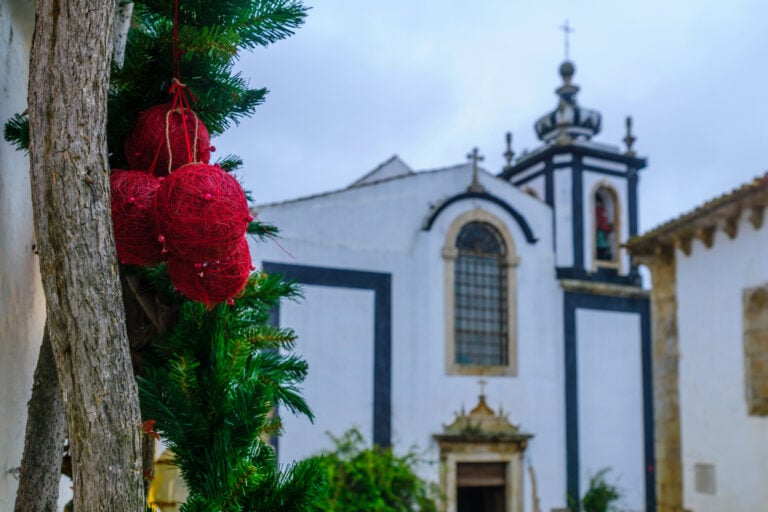In January, the granite city feels cozy and romantic, with misty mornings over the Douro River and plenty of spots to warm up with a glass of Port wine! Temperatures typically hover between 5 °C and 14 °C, so while it’s a bit cooler than the capital, it’s nothing a good coat and a scarf can’t handle.
January is a fantastic time to explore Porto’s rich cultural scene without the summer crowds. World-class concerts in iconic venues, thrilling movie screenings, and immersive art experiences. Plus, the post-holiday sales make shopping in Santa Catarina irresistible.
As such, here are 19 unmissable events to attend in Porto in January 2026.
1. Spiritus Natalis (Final Show!)
When: January 2, 2026
Where: Igreja dos Clérigos, R. de São Filipe de Nery
How much: 10 EUR
If you arrive in Porto right at the start of the year, you have one last golden opportunity to witness Spiritus Natalis before it ends. Hosted inside the iconic Clérigos Church, one of Porto’s most recognizable baroque landmarks, this is a spiritual and sensory journey. The show is produced by the creative studio Ocubo and uses state-of-the-art video mapping and sound that transforms the church into a true canvas.
The Spiritus Natalis edition is specifically designed for the holiday season. Since this is the very last session of the seasonal run, it’s a perfect way to say goodbye to the festive season and welcome 2026 in one of the city’s most beautiful spaces.
2. Exhibition: Maurizio Cattelan “Sussurro” (Final Days)
When: Until January 18, 2026
Where: Serralves Museum & Park, R. Dom João de Castro 210
How much: 24 EUR (General Ticket)
The Serralves Foundation is the crown jewel of Porto’s art scene, combining a contemporary art museum, a stunning Art Deco villa, and extensive gardens.
January marks your last chance to see “Sussurro,” a major exhibition by the provocative Italian artist Maurizio Cattelan. Known for his satirical and often controversial pieces, Cattelan’s work is displayed here in dialogue with the historic architecture of the Serralves Villa. Walking through the exhibition feels like a treasure hunt for meaning.
Plus, Serralves is a perfect day-trip destination: you can explore the indoor galleries when it rains and wander the Treetop Walk in the park during sunny spells.
3. Sombra – Bumba na Fofinha
When: January 9-10 2026
Where: Super Bock Arena (Pavilhão Rosa Mota), Jardins do Palácio de Cristal, R. de D Manuel II Porta 03
How much: 20-30 EUR
Mariana Cabral, better known as “Bumba na Fofinha,” is one of the country’s most beloved comedians and digital creators. She returns to the stage with her new solo show, Sombra, taking over the massive Super Bock Arena for two nights.
While the show is in Portuguese, the sheer energy of the event is definitely worth it. If you speak a little Portuguese, you’ll likely understand much of it.
The venue itself, Super Bock Arena, is a spectacular domed building located in the Crystal Palace Gardens (Jardins do Palácio de Cristal). Even if you don’t attend the show, the gardens offer some of the best sunset views over the Douro River and are a fantastic spot for a pre-dinner walk!
4. Resistência at Coliseu Porto Ageas

When: January 10, 2026
Where: Coliseu Porto Ageas, R. de Passos Manuel 137
How much: 20-45 EUR
Resistência is a legendary Portuguese musical project that brings together some of the most distinctive voices and musicians in the country to reimagine rock and pop classics. Without a doubt, the concert is a massive sing-along, filled with nostalgia and national pride.
Listening to these songs at the Coliseu Porto Ageas adds a layer of magic to the night. The Coliseu is a historic venue with an intimate atmosphere, known for having the best acoustics in the city.
5. CATS – The Musical
When: January 14-18, 2026
Where: Super Bock Arena (Pavilhão Rosa Mota), Jardins do Palácio de Cristal, R. de D Manuel II Porta 03
How much: 35-75 EUR
Andrew Lloyd Webber’s record-breaking musical CATS arrives in Porto for a limited run of performances that promise to be nothing short of spectacular. This original production brings the Jellicle Cats to life with its world-famous score including the timeless hit “Memory.” The show is renowned for its incredible makeup, costumes, and choreography that blends ballet, jazz, and acrobatics. In short, it’s a Broadway-caliber production.
It’s a fantastic option for families or theater lovers, and you can also combine it with a stroll through the surrounding Crystal Palace Gardens for a perfect afternoon.
6. White Wedding – Exposição Para Noivos
When: January 17-18, 2026
Where: Alfândega do Porto (Congress Centre)
How much: 6.42 EUR for a day pass; 11.77 EUR for full pass
Located in the historic Alfândega building right on the riverbank, White Wedding is the premier bridal and event showcase in the north of Portugal. Even if you aren’t planning a wedding, the venue and the vibe make it an interesting stop for fashion enthusiasts. For one thing, the Alfândega is a stunning piece of 19th-century industrial architecture. Secondly, the event showcases the best of Portuguese design, fashion, and event planning.
The location is unbeatable. After browsing the expo, you are steps away from the riverside promenade of Miragaia, one of Porto’s most picturesque and colorful neighborhoods, which is perfect for a sunset walk or a glass of wine by the water.
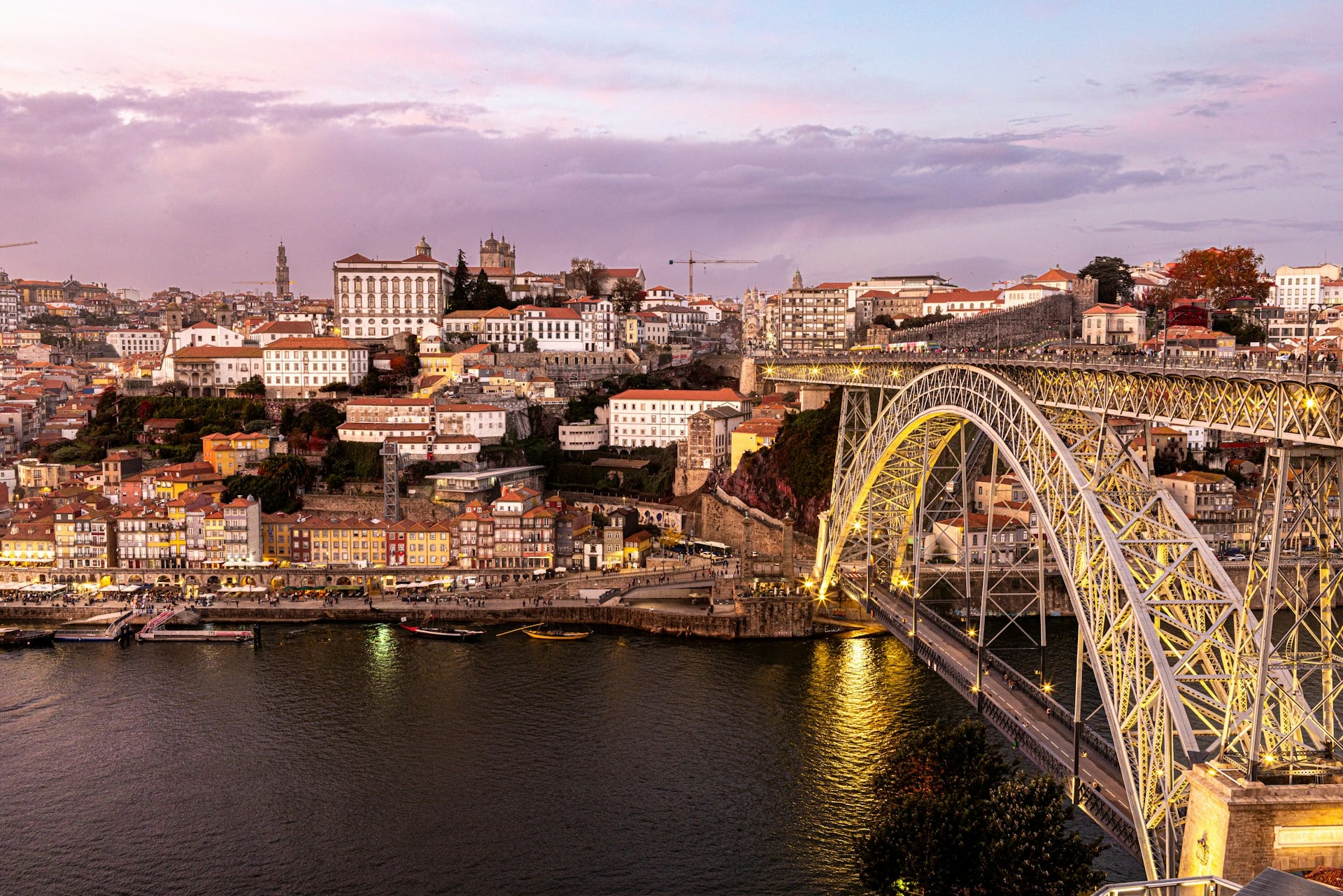
7. Pedro Abrunhosa
When: January 23-25, 2026
Where: Super Bock Arena (Pavilhão Rosa Mota), Jardins do Palácio de Cristal, R. de D Manuel II Porta 03
How much: 25-70 EUR
Born and raised in Porto, Pedro Abrunhosa is one of Portugal’s biggest-selling artists, known for his trademark sunglasses, raspy voice, and poetic lyrics that blend rock, jazz, and soul. Seeing him perform in his hometown is a completely different experience than seeing him anywhere else – the connection with the audience is visceral.
He takes the stage at Super Bock Arena on three nights, so if you want to understand the spirit of Porto’s contemporary culture, hurry up and get your ticket to one of his shows. It’s undoubtedly one of the best investments you can make.
8. Dr. Jordan B. Peterson: We Who Wrestle with God Tour
When: January 30, 2026
Where: Super Bock Arena (Pavilhão Rosa Mota), Jardins do Palácio de Cristal, R. de D Manuel II Porta 03
How much: 34-75 EUR
The renowned Canadian psychologist and author Dr. Jordan B. Peterson brings his international tour to Porto at the end of the month. His events are major intellectual gatherings that attract diverse audiences interested in psychology, philosophy, and self-improvement.
The “We Who Wrestle with God” tour focuses on analyzing biblical stories through a psychological and historical lens. It promises a thought-provoking evening of lecture and Q&A. It’s a rare chance to see a global public intellectual in Porto if you’re interested in the subjects that will be discussed.
9. Circo de Natal (Final Days!)
When: Until January 4, 2026
Where: Coliseu Porto Ageas, R. de Passos Manuel 137
How much: 10-25 EUR
Porto’s most cherished holiday tradition doesn’t end when the calendar flips to 2026. You have until the first weekend of January to catch the legendary Circo de Natal at the Coliseu, a cultural event that has been delighting families since 1941.
The show takes place in the Coliseu’s magnificent circular auditorium, which was designed specifically for circus arts. This year’s production features a live orchestra and an impressive cast of acrobats, clowns, and illusionists.

10. Dr. Strangelove
When: January 4, 2026
Where: Batalha Centro de Cinema, Praça da Batalha 47
How much: 5 EUR
Book your first Sunday in January to celebrate cinema history with a special screening of Stanley Kubrick’s satirical masterpiece, Dr. Strangelove or: How I Learned to Stop Worrying and Love the Bomb. This session is hosted by the Cineclube do Porto, one of the oldest film clubs in the world, which is currently celebrating its 80th anniversary.
Watching Peter Sellers’ triple performance on the big screen at Batalha Centro de Cinema is a treat in itself. Batalha is a beautifully renovated modernist landmark that has become the heart of Porto’s film scene. The morning slot makes it a perfect intellectual start to your Sunday. Grab a coffee at the cinema’s stylish bar overlooking the square before settling in for the War Room madness.
11. Le Meraviglie (The Wonders)
When: January 10, 2026
Where: Batalha Centro de Cinema, Praça da Batalha 47
How much: 2.50-5 EUR
As part of the Play It Again, Batalha cycle, Batalha presents Alice Rohrwacher’s hauntingly beautiful film Le Meraviglie (The Wonders). Winner of the Grand Prix at Cannes, this film tells the story of a family of beekeepers living in the Tuscan countryside. One day, their lives are disrupted by the arrival of a reality TV show crew that wants to document rural life.
It’s a tender, poetic reflection on vanishing traditions and the clash between rural and urban life.
12. Playtime – Vida Moderna
When: January 11, 2026
Where: Serralves Foundation, R. Dom João de Castro 210
How much: 3 EUR
The Serralves Foundation continues its prestigious Carta Branca a Luis Miguel Cintra cycle with a screening of Jacques Tati’s monumental comedy, Playtime. Famous for its colossal set (Tativille) and brilliant visual elements, this 1967 classic is a satirical look at modern architecture, consumerism, and the chaos of urban life.
13. David Bowie: The Last Five Years

When: January 15, 2026
Where: Cinema Passos Manuel, R. de Passos Manuel 137
How much: 7 EUR
January is often dedicated to David Bowie (marking both his birth and passing), and the ultra-cool Passos Manuel cinema is hosting a special screening of the documentary David Bowie: The Last Five Years. This film offers an intimate look at the creative burst that defined his final years, including the albums The Next Day and Blackstar, and the musical Lazarus.
Passos Manuel is one of Porto’s hidden gems, an Art Deco cinema tucked inside a parking garage complex that also houses a cult favorite bar.
14. Yui Yaegashi: Between Two Opposites
When: Until January 17, 2026
Where: Porto Arts Club, R. Bela 24
How much: Free entry
If you’re exploring the Bonfim or Campanhã neighborhoods, make a detour to The Porto Arts Club on Rua Bela to see the closing days of Yui Yaegashi’s solo exhibition. Based in Tokyo, Yaegashi is known for her small-scale, precision-based abstract paintings that play with color, texture, and grid structures.
The exhibition, titled Between Two Opposites, is a masterclass in minimalism and subtlety. The venue itself is a fascinating space that offers a slice of the international art market in a very local Porto setting.
15. Ricardo Passos at Casa da Música
When: January 29, 2026
Where: Casa da Música, Av. da Boavista 604-610 Piso 0
How much: Free
Make sure to catch Ricardo Passos performing at Casa da Música for a relaxed evening. It is hosted in the venue’s stylish café, and it’s also free!
It’s the perfect “local secret” plan: head to Casa da Música for a glass of wine, enjoy the live set, and soak up the architecture of Rem Koolhaas from the inside, while listening to Ricardo Passos.
16. Space Oddity + 2001: A Space Odyssey

When: January 24, 2026
Where: Batalha Centro de Cinema, Praça da Batalha 47
How much: 2.50-5 EUR
Batalha Centro de Cinema’s session pairs David Bowie’s Space Oddity with Stanley Kubrick’s 1968 landmark 2001: A Space Odyssey.
Seeing 2001 on the big screen is a rite of passage. The visual effects, the sound design, and the sheer scale of the film get a whole new meaning in a proper cinema environment. Batalha’s projection quality is top-tier and ensures that you see the Stargate sequence exactly as it was meant to be seen.
17. Morricone & 100 Years of Cinema
When: January 31, 2026, 4:30 p.m.
Where: Coliseu Porto Ageas, R. de Passos Manuel 137
How much: 30-65 EUR
Why not spend your Saturday afternoon delighting in the most beautiful melodies ever written for film? The Royal Film Concert Orchestra takes the stage at the Coliseu to pay tribute to the late Maestro Ennio Morricone. Expect to hear the haunting harmonica of Once Upon a Time in the West and the romantic strings of Cinema Paradiso.
18. The Music of Zimmer & Williams
When: January 31, 2026
Where: Coliseu Porto Ageas, R. de Passos Manuel 137
How much: 30-65 EUR
Following the afternoon Morricone tribute, stay at the Coliseu to listen to some of the world’s most famous songs signed by the titans Hans Zimmer and John Williams.
The imperial march of Star Wars, the magic of Harry Potter, the intense rhythms of Gladiator and Interstellar…truly a non-stop parade of hits. It’s a fantastic event for groups or families, because, after all, everyone will recognize the hits.
19. The Lady Vanishes (Play It Again)
When: January 11, 2026
Where: Batalha Centro de Cinema, Praça da Batalha 47
How much: 2.50-5 EUR
Hitchcock fans, rejoice! As part of its dedication to classic cinema, Batalha brings The Lady Vanishes (1938) back to the screen. This British thriller is a masterclass in suspense and wit, featuring a disappearing passenger on a snowbound train and a conspiracy that unravels with incredible tension!

